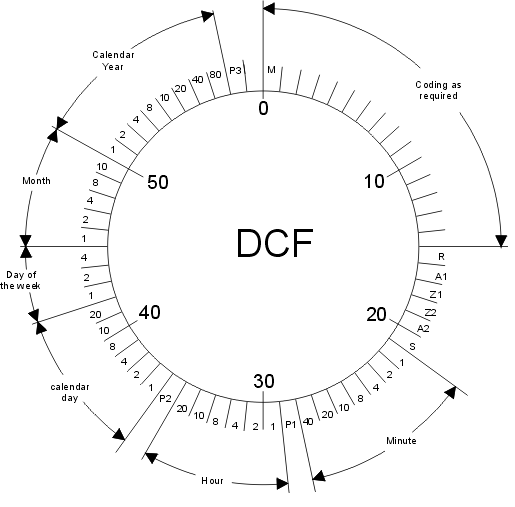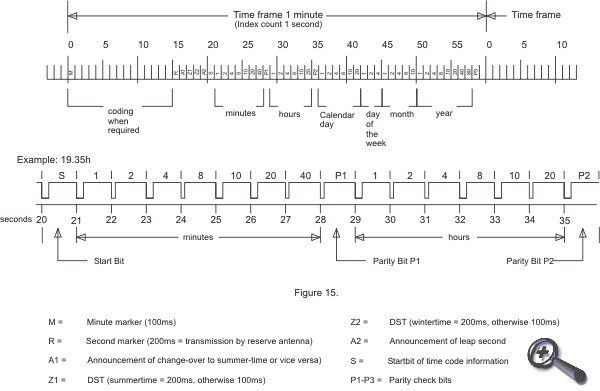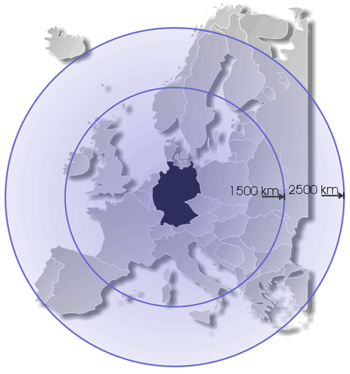|
|
|
 |
|
 |
| |
| Station: |
| DCF 77 |
| Frequency: |
| 77.5 kHz |
| Transmitting
power: |
| 50 kW |
| Location: |
| Mainflingen / Germany |
| Receiving
area: |
| 1500 km |
| Geographical
coordinates: |
| 50° 01' N, 09°
00' E |
| Time
of transmission: |
| permanent |
| Modulation: |
| 75% |
|
|
 |
|
 |
|


Time code information according the information
from the "Physikalisch Technische Bundesanstalt (PTB)"
The information is present as a continuous bit stream with a data rate
of 1 bit per second by using pulse width modulation. The power of the
carrier is reduced to 25% of it's nominal power at the begin of each second
and then restored to it's full level. The only exception is the 59th second
of every minute. The missing reduction signalises the next minute marker.
Thus, the leading edge of every negative going pulse is on time. Regaining
full power after 0.1 seconds represents a binary "0", after
0.2 seconds a binary "1". There are three parity bits available.
Parity bit P1 combines the 7 bits of the minute information to an even
number of "1". Parity bit P2 combines the 6 bits of the hour
information to an even number of "1". Parity bit P3 combines
the 22 bits of the date information to an even number of "1".
The bits located at position 17 and 18 (Z1 and Z2) are used as an indication
flag to inform about "Middle European Standard Time (MEZ)" and
"Middle European Summer Time (MESZ)". If bit 17 is binary "0"
(0.1 seconds) and bit 18 is a binary "1" (0.2 seconds), the
time information is indicated as MEZ. If bit 17 is binary "1"
and bit 18 is binary "0", MESZ is distributed.
Before each change from MEZ to MESZ or vice versa, bit 16 (A1) will provide
an "attention marker" 1 hour before the change by representing
a binary "1".
The bit 19 (A2) announces a leap second by representing a binary "1"
for the duration of 1 hour before. The binary coded decimal (BCD code)
format is used to combine binary digits in order to represent decimal
numbers (for location of the information, as well as content, see drawing).
This gives the possibility to decode all necessary information of time,
day of the year and year (and some additional information) out of the
signal.
Please verify this information before commercial use !
http://www.ptb.de/de/org/4/43/433/_index.htm

|






